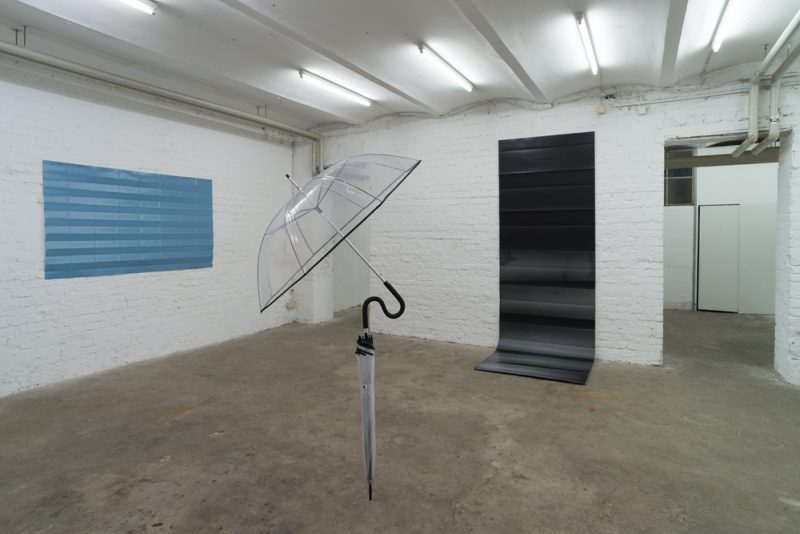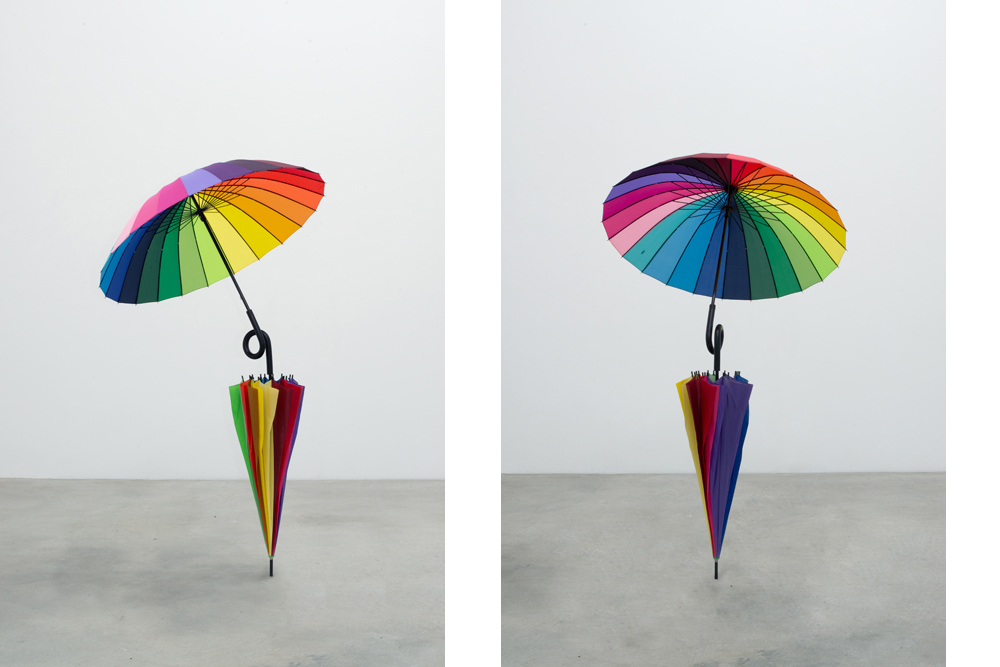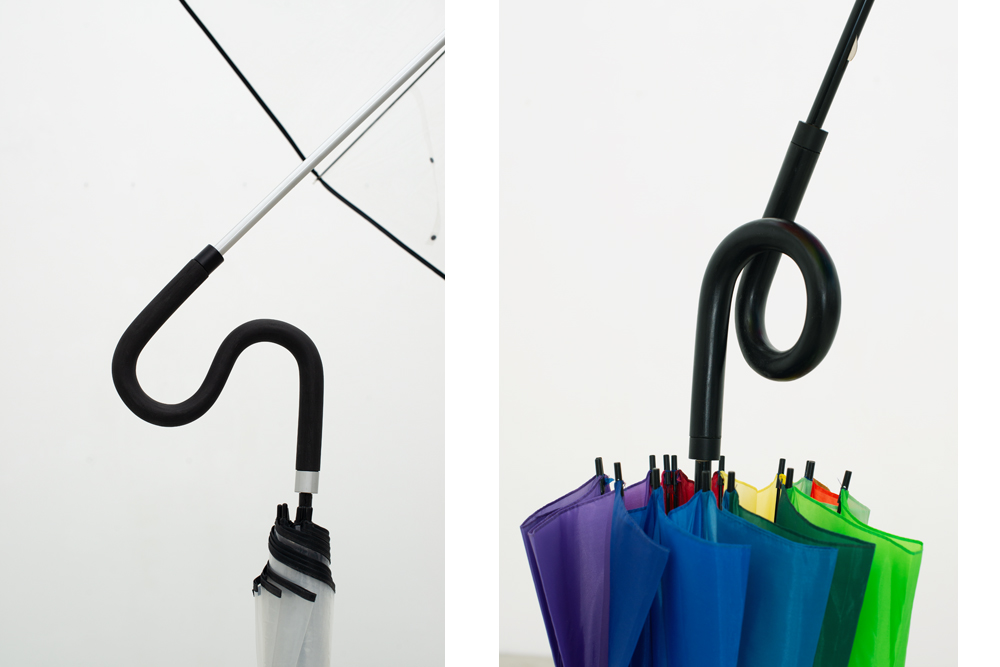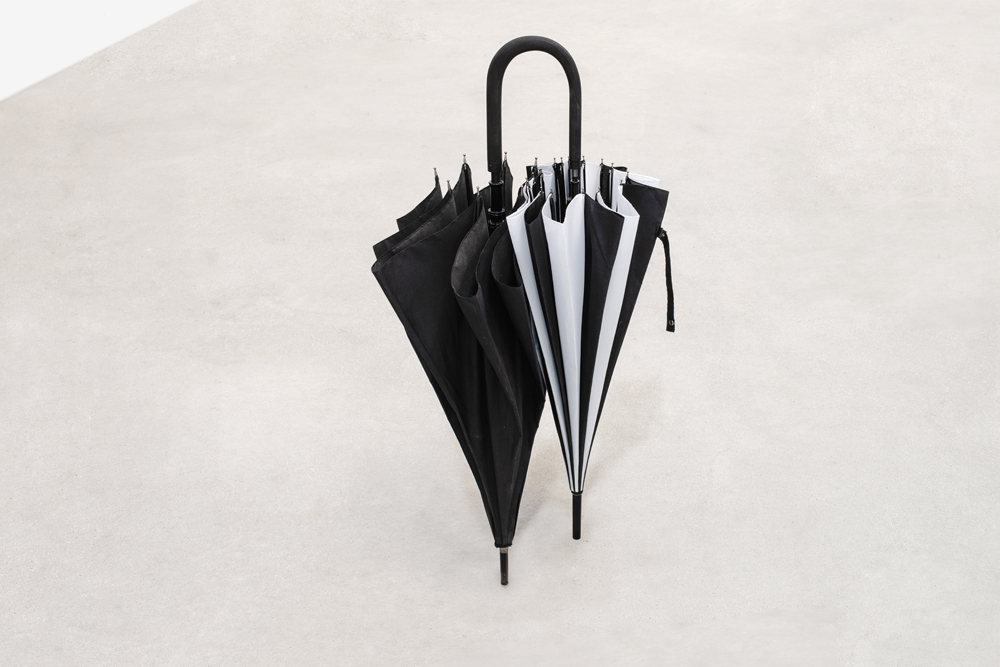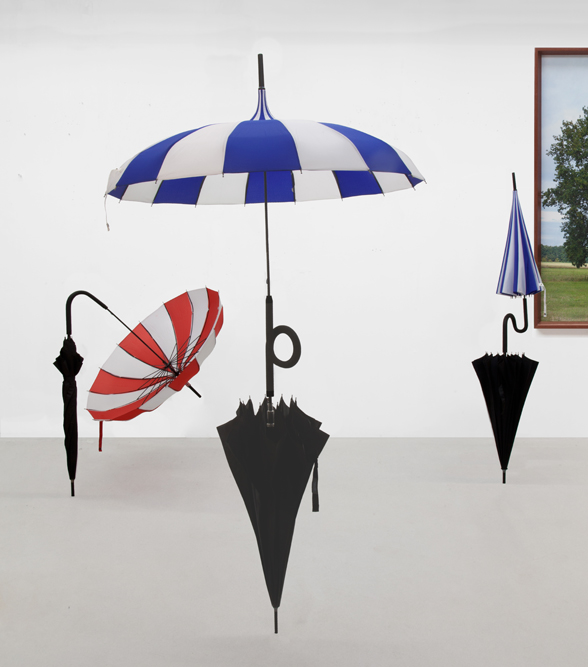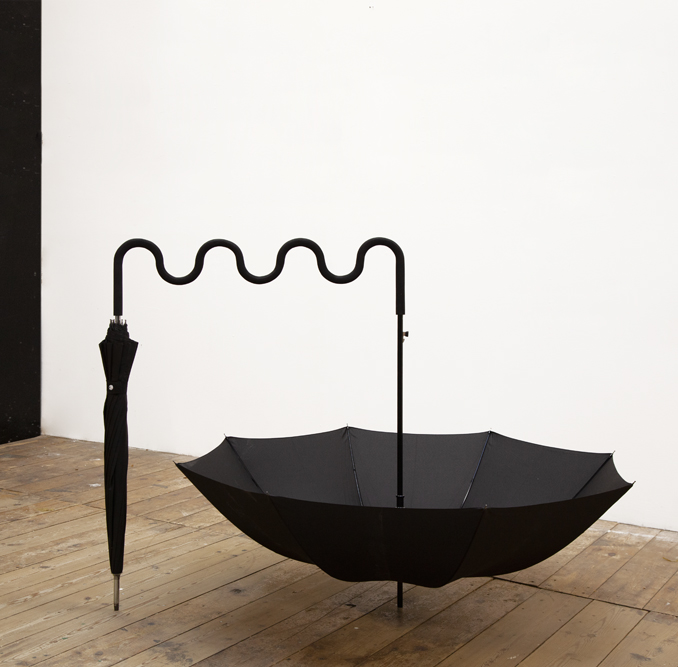24_, since 2016
Umbrellas, wood, metal
Approx. 180 × 15 × 30 cm
Among many other things, the 20th century has brought about the realization that everything can be art. Consequently, every thing can become a work of art and every process, every raw material can become artistic material. Through this unlimited choice in contemporary art, the caption of an artwork became – besides its documentation – its most important companion. It is often where the most adventurous things can be found. While some artists limit themselves to a simple „mixed media“ to describe their materially complex works, ever since Joseph Beuys and Dieter Roth (and many others who have radically expanded the spectrum of material use), sausages, fat and faeces in the art work caption can no longer shock us. The statement of contemporary artistic objects can hardly be separated from their materials and techniques; they have become decisive actors in art.
Stefan Alber lists an umbrella as the material for his serial work 24_ (since 2016). Not cloth, aluminium poles, sliders, springs, nylon yarn, plastic tubes (and whatever else an umbrella is made of), but simply umbrella. He thus uses a product that has already been thought through to the end, industrially manufactured for specific purposes, and which is now completely rethought in the course of his artistic process; one could say that he starts from scratch. The umbrella is the artist’s point of departure, he approaches it like any other material, like a malleable lump of clay. He photographs it, collects images and uses them to create an archive, deals with the object as a whole and all its special details.
Sometimes the material gives a form or takes a direction that surprises the artist himself. The photograph of a stretched-out umbrella from above, for example, abstracts the object to such an extent that one can think more of a colour circle or a geometric-abstract painting than of a utility object. Processed as sculptures and connected to each other, the umbrellas always remain recognizable as what they are, but at the same time they alienate themselves in another direction: Like dancers or oversized clock hands, they stand or even float in pairs in space (it is not surprising that Alber calls a group of pairs of umbrellas a Rehearsal). In these fragile constellations, the familiar properties of the umbrella combine with other, one might say materially foreign associations to create something completely new. The formally identical objects become independent characters that relate to each other. It is no longer the material itself, but its processing and arrangement by the artist that leads to a dynamic in which suddenly supposed opposites such as large and small, stillness and movement, heaviness and lightness interact with each other.
Text: Katharina Wendler
